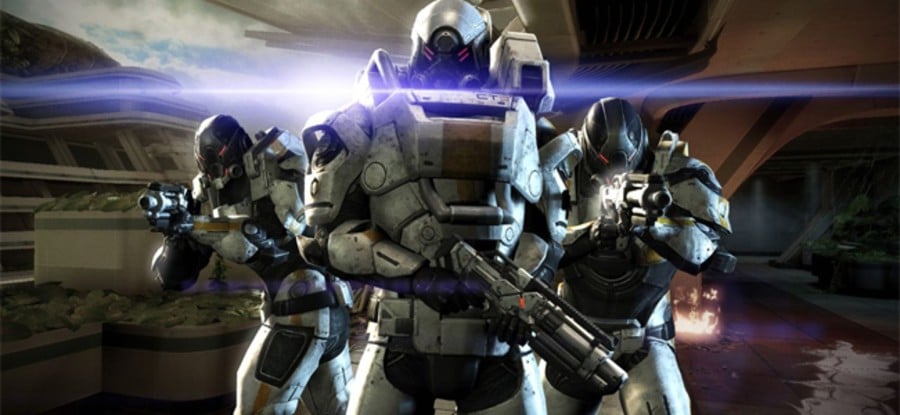
It's all about the lens flare
By today’s standards, the original Mass Effect isn’t a great looking game. Admittedly it’s pretty bland, far too empty, and overall just a bit boring. But still, it did have its own style – a style that, over the course of the trilogy, would evolve in multiple different ways.
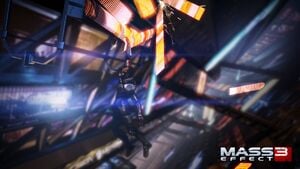
Right from the start, it was clear that a lot of effort had been put into designing the diverse inhabitants of the galaxy. The Asari are mostly human with the purpose of appearing attractive to us. The Salarians are tall and thin, their large eyes mimicking the kind of aliens that we hear about on TV when it’s a slow news day.
While animations remained static throughout the course of the series, level design dramatically improved. As previously alluded to, the original game's environments were on the wrong side of simplistic – there were no lovely views to stop and take in, no areas that really cried out to be explored. Even some of Mass Effect 2’s areas shared the same disjointed, overly generic feel. However, the second title introduced an art style that really defined the trilogy.
By the second entry in the series, Mass Effect had found a look that it could call its own
Suddenly there were neon lights everywhere, sprawling vistas to gaze at, and an even larger amount of lens flare shooting across the screen. The style went hand-in-hand with the game’s slightly more serious tone, and to a large extent, set the bar for other sci-fi games. Hub worlds like Omega quickly became favourites; by the second entry in the series, Mass Effect had found a look that it could call its own.
Mass Effect 3 had the seemingly simpler job of improving upon what its predecessor had accomplished, so we ended up with even bigger vistas and larger battlefields. Meanwhile everything else looked better, from the skin on Shepard’s face to the puddles on a rain-soaked multiplayer map. More than anything, though, the series finale offered a real sense of scale. This is no more evident than in the numerous missions in which we see Reapers stalk the picturesque background, rampaging their way through distant battles.
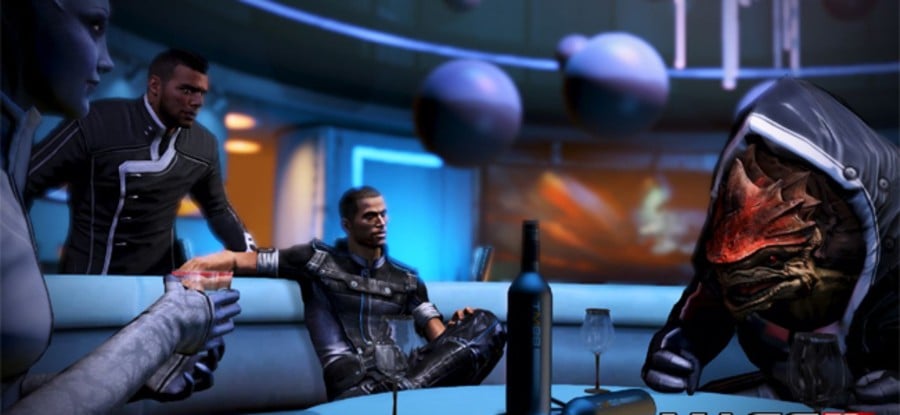
Space Jammin'
It takes some time before you realise that the Mass Effect trilogy is sewn together by music; it’s almost like the invisible glue that holds everything in place. It’s also responsible for giving some genuine feeling to many emotional scenarios. It’s no secret that the franchise is home to some superb musical scores – each and every track has its purpose, with a huge variety creeping up throughout all three games.
One great example of a tune helping to bring a scene to its emotional climax would be Thane Krios’ death in Mass Effect 3. The scaly assassin’s stand against antagonist and Raiden-wannabe Kai Leng leaves our favourite fish-man dying in a hospital bed, accompanied by his son and Shepard. It’s sad enough to see Thane slowly losing grip on life, but a brilliantly timed harmonic piece helps the situation really hit home.
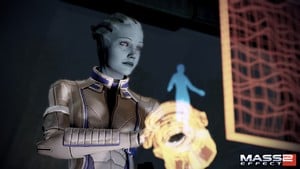
But it’s not all about drama – even the music that plays in combat is beautifully orchestrated. Some of the best battle tracks are present in Mass Effect 2’s DLCs, specifically Lair of the Shadow Broker and Overlord, where exciting, high tempo scores instantly increase the tension of gunfights. Back in the first title this was also the case, except electronic beats replaced stringed instruments.
When it comes down to it, the word ‘epic’ is probably thrown around far too often these days, but nevertheless it sums up the trilogy’s soundtrack quite well. It becomes increasingly hard to think of a franchise that has used sound so successfully in terms of supplementing gameplay.

But Mass Effect’s superb audio design doesn’t stop with the music. Since dialogue has always been a core pillar of the series, the voice work has to be top notch – after all, no one takes poorly acted characters seriously, regardless of the media. Thankfully, BioWare managed to recruit a stellar cast whose talent has shone through the entire trilogy. Garrus’ wisecracks are amplified thanks to Brandon Keener’s confident execution, Shepard’s purposefully ambiguous background is given meaning through rock solid performances from Jennifer Hale and Mark Meer, while the Illusive Man’s status and charisma is mirrored perfectly by the legendary Martin Sheen.
The quality also stems into the sound effects department. We’ve all grown to love how punchy biotic explosions feel, or how sickeningly satisfying the sound of a Cerberus Trooper’s head exploding into a fine paste is. Not to mention the quality and sheer amount of different gunfire noises and echoes which accompany the vast array of weapons on offer.
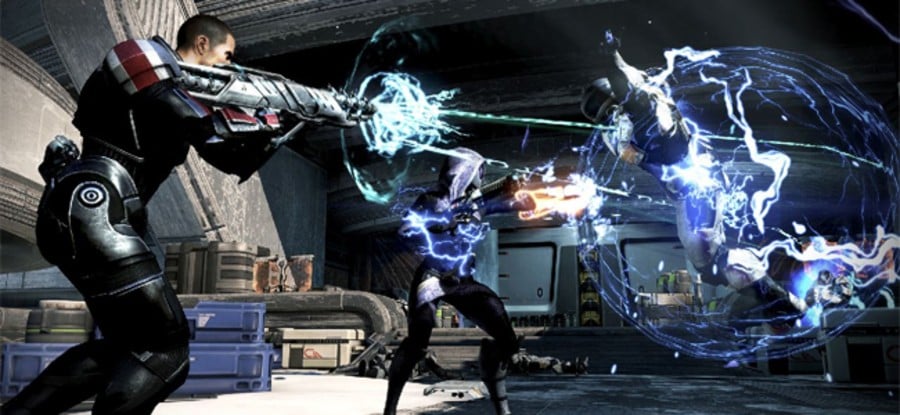
These days it’s all visceral combat
Gameplay unsurprisingly defines a game. If a title can do something new or put an original spin on a solid formula, it’s usually remembered for a long time. Mass Effect has always had the difficult task of balancing two genres – role playing and third person shooting. BioWare had made its name catering to the hardcore RPG crowd, and this feel carried over to the first game in the trilogy, where skill trees were huge and daunting, loot was found just about everywhere imaginable, and every piece of equipment was buried in statistics.
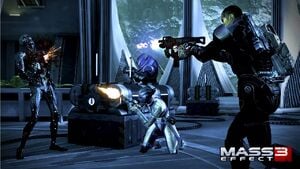
It’s no surprise, then, that the first Mass Effect’s actual shooting mechanics were a bit of a mess. Even compared to the shooters of the time, popping in and out of cover felt unpolished and unconvincing – but things improved dramatically over the course of the series.
With the second title, things played much more like a third-person shooter – Shepard and company now clicked into cover, and guns actually felt like guns. It wasn’t perfect, but the jump in refinement was enormous. However, this led to many of the RPG elements being removed, much to the frustration of RPG purists.
If guns are your standard RPG weapons, then biotic and tech powers are your magic spells
Of course, you can’t keep everyone happy when it comes to gaming – but with Mass Effect 3, the developer finally happened upon a decent balance marked by the return of numerous RPG elements. Meanwhile the combat had finally reached a very polished and enjoyable level – Shepard gained the ability to roll into and around cover, allowing for the kind of action-packed sci-fi fire fights the series had been aiming for all along.
That said, gunplay is only half of the equation. If guns are your standard RPG weapons, then biotic and tech powers are your magic spells. Stripping enemy shields, burning armour, and detonating geth in a sea of biotic explosions, powers play a substantial role in taking down more specialised enemies, and this has been the case since the very beginning of the series. In fact, it is one area that hasn’t needed much refinement over the years thanks to how much variety and versatility is on offer – especially since Shepard can be one of six distinct character classes.
Join us on the next page while we look back at Mass Effect's conversations and controversial multiplayer.
Comments 8
love the Mass Effect games, one of the best series released on the PS3 and i was sad to see Shepard's story end, i just hope that Mass Effect 4 can capture the same magic that the original trilogy had, the great characters, the amazing alien races and the great worlds and places you visited
My favorite trilogy ever! I don't have time to read this just yet but will ASAP.
Very well written article and a good read. I quite enjoy the mass effect series and have spent many hours on the multiplayer with my friends.
Fantastic article, Robert. I've never quite invested in the Mass Effect series as deeply as others, but I still really enjoy the games and parts of the lore. I had big problem with the shooting in Mass Effect 2, but I felt that the third game really rectified that problem. I also agree on the subject of the multiplayer — that was a real surprise highlight for me.
I'm really curious to see where they go next. My big guess is that the next Mass Effect will go first-person, and will play similarly to BioShock. How would you all feel about that?
Great article. I love the series, with ME2 still being in my top 3 favs of all time.
The combats with biotic powers is still probably my favorite combat mechanic from any game I have played. Combining powers - so much fun!!
My one niggle with ME2 was the Paragon/Renegade meter and the impact it had on future conversations. I felt it made you play Shepard as very 1 dimensional, either hero or bad boy, reacting to every person and every situation the same (which is nonsense), otherwise you are punished later in the game with only bad conversation options. I would have liked Shepard to be a little more grey, and to be able to treat people differently.
ME3 was such a shame in so many respects, while it is definitely an awesome game, it was a frustrating experience to fans of the series. Personally I didn't mind the ending as much as most, but there were so many good things from ME2 that they took out, it always felt half baked to me. In ME2 I owned and fully upgraded every weapon and piece of tech. In ME3 with mining removed etc, I somehow never really cared. My biggest criticism was the cash grab to make the Omega campaign DLC. Omega was may fav part of ME2, and they took it out! They even alluded to it in the game. Only having the citadel to me made it feel like half a game in comparison. I just refused to buy the DLC on principle.
Don't get me wrong, I enjoyed ME3, but other than the graphics it was a huge step backwards from ME2.
I have ranted enough.
Great read Robert! I don't think I have ever played another series of games that I had such a strong connection to the characters. The wealth of information in the codex and dialogue brings the story and characters to life like no other.
I'm both excited and nervous for what's next for Mass Effect but I know I will be along for the ride.
I really need to pop this in again, I did beat and loved mass effect 2,but only put about 2-3 hours into ME3.
Excellent feature. Behind Bioshock this was my favorite new franchise of this gen and I was satisfied with the way it wrapped up. As much as I love it, I'm not really sure I want to see it continue, especially with EA in charge.
Tap here to load 8 comments
Leave A Comment
Hold on there, you need to login to post a comment...